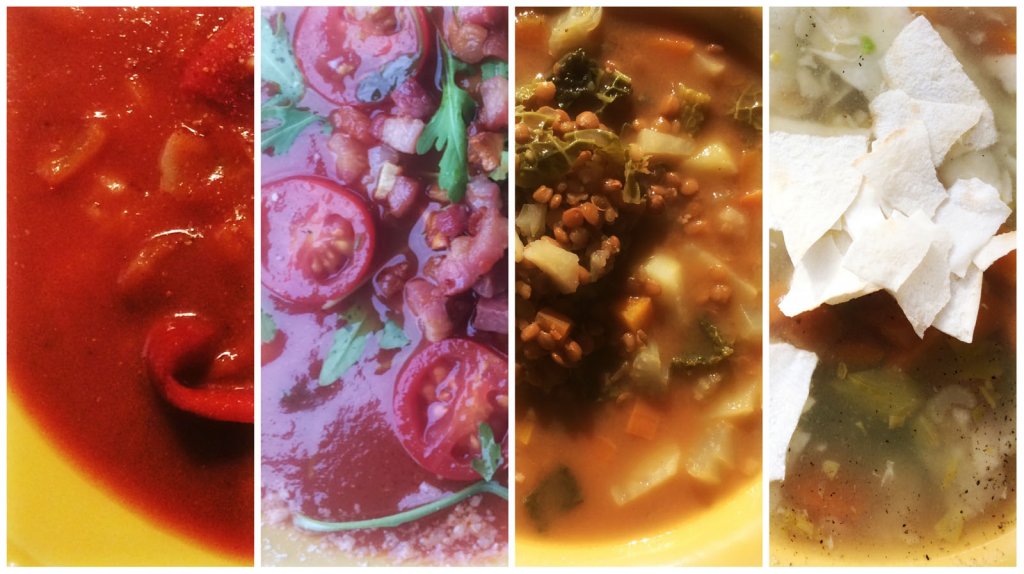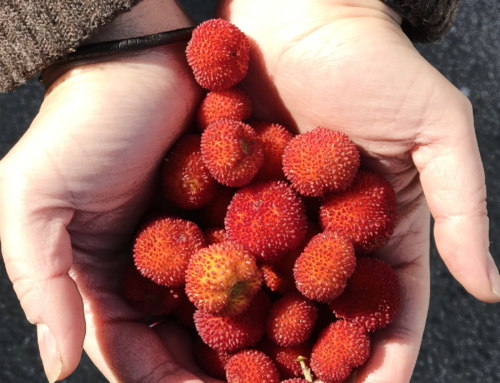
When we hear about Italian food being “simple” and “fresh,” you kinda feel like you have a good grasp of it. Most people know that Italian cuisine is largely based on seasonal and local ingredients. A little-known fact is that “Italian food” is really a misnomer because the cuisine is hyper-regional. If you drive one hour in the opposite direction from where you are, you will find different specialty dishes and enjoy a whole new array of choices on the menu.
Living in Sardinia for the past two months and cooking 3 meals a day, 7 days a week, I have become very intimate with the local ingredients. Bitting into the most delicious pears and grapes I have ever had in my life, both with layers upon layers of flavors, like a fine wine, was a revelation. I have even discovered new favorite staple foods, like persimmons, fennel, and radicchio. I’ve tried varieties of tomatoes I never knew existed and cooked with local salt and olive oil.
The thing that has blown me away about cooking here is that I don’t miss my old spice cabinets. Yes, you read that right, cabinets. I am a huge lover of spices, and I used to special order them from a spice shop when I lived in the US. I used them all the time, loving the variety of flavors that they brought to my home-cooked meals.

Agriculture has been going on so long here, in comparison to the US, that the land is maybe more fertile, or perhaps it is the difference of the mineral ratios in the soil. I am no stranger to local food, in fact, I tended an enormous vegetable and herb garden in Vermont, but no matter how I slice it, food is different here.
One of my favorite things to make during the fall and winter months is soup. I love making my own homemade broths and then cooking all varieties of veggies and proteins in the nutritious liquid. When we were in Vermont, I would load up my crockpot with whatever was on hand from my huge pantry and freezer, and I would conjure up a delicious meal dotted with my precious spices.
The History of Soup
It could be argued that soup is one of the first cooked foods in a vessel (like clay, water-tight baskets or animal hides). In fact, there is anthropological evidence that shows the existence of soup since about 20,000 BC. Hot rocks were used to get liquid up to temperature in order to cook the soup ingredients.
The word soup comes from the French word soupe (“soup”, “broth”). The word also has Germanic language roots. The word sop, which means to use a piece of bread to soak up soup or a thick stew.
Old Ways for Modern Days
These days, living in a tiny home, with no pantry and a small refrigerator (maybe double the size of a dorm fridge), I have had to completely change how I cook. There is no room for storage, and so we grocery shop about every 2-3 days. The only things in my freezer are some chicken bones, vegetable peelings and ends and cheese crusts, all vital for the new way in which I prepare soup.
I only have a few spices in the house too – several different salts (chunky and fine, one seasoned with rosemary and one seasoned with mirto), also black pepper, sage, cinnamon, bay leaf, juniper berries, cardamom, nutmeg and aglio e peperoncino (garlic and hot pepper blend).
Since the kitchen is part of the living room and dining room (think studio apartment), it is not safe with 2 toddlers to have broth cooking for 24 + hours like I used to. Now I make broth while they play outside after breakfast, and the soups are quick and fresh, ready in time for lunch.
Here is how I make soup like an Italian:
- Pick the freshest ingredients, and try to keep the list of ingredients small. Aim for fewer than 10 total ingredients total, including salt and pepper and broth.
- Use simple flavors so each ingredient can really shine through. For example, chose one protein and up to three veggies that compliment it best.
- Choose one primary spice to flavor your soup, even if it is something simple like pepper.
- Put love in it! (If you want to read more about putting love in your food, check out my book Love In Every Bite)
The first soup is tomato and roasted vegetables; the next, a truly American inspired soup – BLT; the third lentil soup with simple vegetables; and finally, comforting chicken soup, with nettles and pane carasau, the traditional Sardinian bread.
I will share the most popular choice in one of my upcoming newsletters, the next FREE seasonal guide for January.
I am updating this post to reflect the winning recipe. I hope you enjoy it!
- 4 chicken wings
- 6 cups water
- 1 cup of brewed nettle tea
- 4 carrots, chopped
- 2 celery stalks (with leaves) chopped
- cheese rind*
- salt and pepper
- 1 1/2 cups of frozen peas
- Place chicken wings and water in a large soup pot and bring to a boil.
- Lower heat to simmer and let cook for 2- 2 1/2 hours.
- Brew nettle tea.
- After 2 1/2 hours remove chicken wings from the pot, and set aside to cool a little; enough to handle.
- Place chopped carrots, celery and cheese rind in the pot and season with salt and pepper.
- Simmer for about 1/2 hour or until veggies are cooked through the way you like them.
- While veggies are cooking, strip the meat from the bones.
- Once the veggies are cooked add the nettle tea and the peas, and cook another 5 minutes.
- Turn off heat and remove anything that is left of the cheese rind.
- Then add the meat to the pot and taste for seasoning. Season as you like with salt and pepper (I like this soup with a good bit of pepper).








Chicken soup with nettles sounds interesting. I have never cooked with nettles but have had many dishes made with them by foraging friends and professionals.
I love nettles. I drink nettle tea every day to help with my allergies.
Tomato and Roasted Vegetable Soup sounds yummy!
It was delicious!